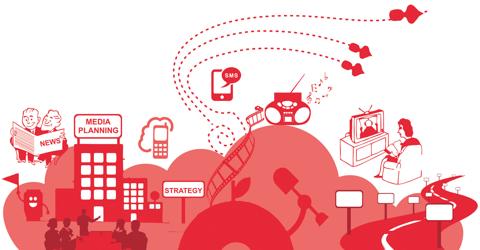It may come as no surprise, but we are living in a consumer-driven expectation economy. There seems to be no shortage of consumers expecting more, even when a cutting-edge app or technology is being released into the palm of their hand. It’s this scenario that has driven hyper-customized communication plans, with the goal of reaching consumers as close to one-to-one marketing as we can.
Because of the expectation economy and consumers being in the driver’s seat, our traditional ways of reaching audiences are no longer the preferred model. Channels are still important, but the way in which consumers are reached is far less important than what the message says when they are reached.
Media planning is no longer an effective campaign strategy for reaching the core (or target) audience with content. Planning media used for a campaign in today’s world has become more about channel management. Today’s consumers require campaigns that reach them and touch them on an individual level. Simply put, a media planning approach and strategy do not allow for this level of engagement.
Today’s consumers require you to audience plan in order to reach them with the most relevant messaging.
Audience planning takes the concept of consumer segmentation and then takes it another step further. While segmentation is still a very useful – and necessary – practice for your financial institution to take on, where consumer segmentation falls short is where audience planning crosses the finish line.
So, what’s the difference between media planning, consumer segmentation, and audience planning?
Macro to Micro
If you think about how you’re going to reach your desired audience, these three concepts work together in a macro-to-micro level. Media planning is the most macro and audience planning being the most micro.
| Concept | Level | Examples |
| Media Planning | Macro | Radio, print, billboards, non-targeted digital banners |
| Segmentation | Sub-macro | Targeted radio (internet), digital billboards, digital advertising, social media, email marketing |
| Audience Planning | Micro | Product and service level remarketing, keyword digital marketing, marketing automation |
The Benefits of Audience Planning
Beyond the idea that successful audience planning allows you to reach individual consumers with messaging relevant to them, there are some very tangible benefits of moving to this level of targeting beyond segmentation. When addressing audience planning, think of it through the lens of a message matrix that you’ll develop for your target audience. With message matrices, the idea is to approach consumers at each stage of the buyer’s journey. Audience planning’s buyer’s journey goes something like this:
- Awareness: Your target audience is now aware of a problem they did not know that they had before. Your product or service is the magic wand that can solve their problem.
- Consideration: With knowledge of product or service that the consumer cannot live without, research will undoubtedly come next. This allows customized messaging to take place.
- Conversion: After receiving a customized offer, the consumer now becomes your customer.
- Loyalty: Having experienced a personalized path to becoming a customer, you now have all of the information you need to continue this practice with this customer in the future, anticipating their needs.
Audience planning takes practice in order to get the engine running smoothly. But it is incredibly essential in today’s consumer-driven world. For more information on how to move to an audience planning model, drop us a line to chat!



